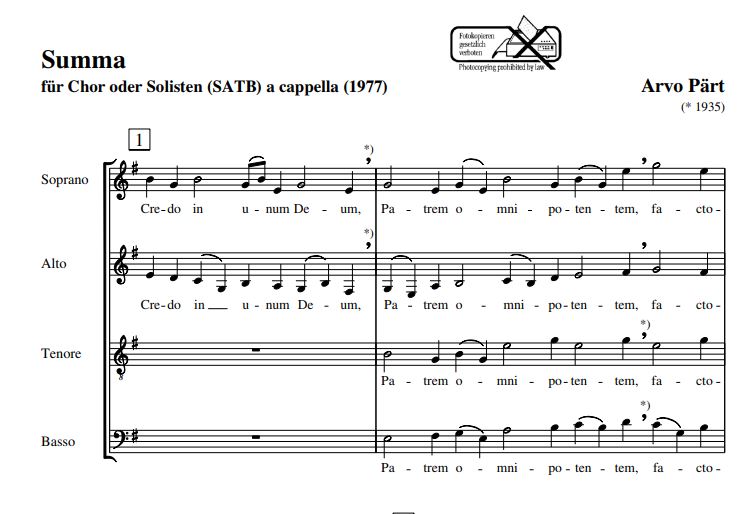16 × 16 = 256 and 367 : 23 = 15.9 and 15 × 23 + 1 × 21 = 366. The journey to the formula of Summa
Maarja Tyler, Arvo Pärt Centre
After eight years of creative searching, Arvo Pärt finally found a way to compose music again in early 1976. In a way, the Hortus Musicus concert in October 1976 can be considered the culmination of this long and challenging crisis, where Pärt’s new tintinnabuli style was heard for the first time in a set of works performed in the Estonia Concert Hall. Seven new pieces were performed: Calix, Modus, Trivium, Für Alina, If Bach Had Been a Beekeeper, Pari intervallo and In spe. The pieces were united under the title Tintinnabuli, seeming to indicate that all of them expressed a common idea or realm of sound. And indeed, the first tintinnabuli compositions have several features in common. For instance, most of them are characterised by the simplicity and rigour of their construction, as well as the visibility of the logic of the process by which they were created.
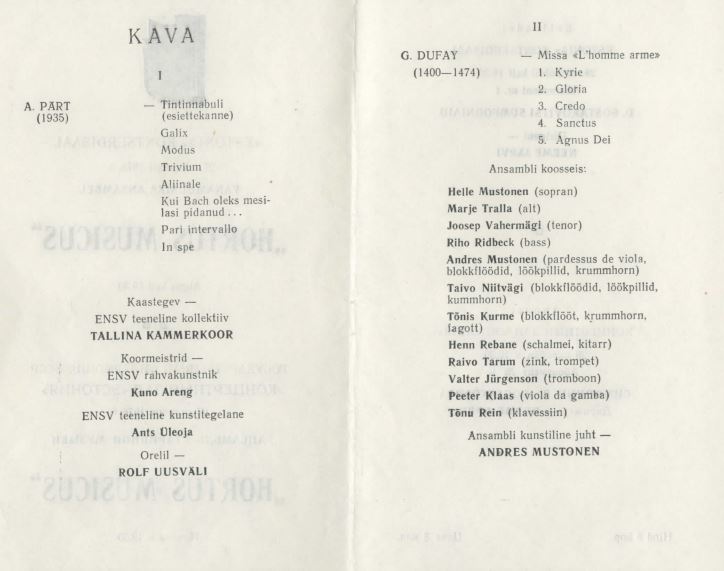
Programme of the Hortus Musicus concert. The first half of the concert featured seven tintinnabuli works
From the reviews published after the concert, it is evident that the audience perceived the differences between Pärt’s earlier musical language and tintinnabuli. However, some reviewers suggested that Pärt had perhaps not yet reached the final destination of his explorations. This opinion might have been influenced by the varied sound profile of certain compositions, such as Für Alina and If Bach Had Been a Beekeeper. The musical systems underlying these pieces differ noticeably, and therefore, we can understand how listeners might not yet have formed an impression of tintinnabuli as a consistent and mature authorial style.
Reflecting on the background of the first tintinnabuli concert, Pärt recalled that presenting seven new compositions to the audience was a considerable effort and an act of self-transcendence. An important factor in introducing the new musical language to the audience was the enthusiasm and deep trust of the Hortus Musicus ensemble in Pärt’s music. The concert motivated the composer to gather the pieces waiting in his music notebooks and complete the nascent and yet unfinished musical ideas to be found there. In addition to the external motivation, the composer had developed an urgent need to engage with his new music. Merely imagining the sounds and humming to himself was no longer sufficient: he had to hear the pieces in a live concert setting.
Pärt has described the atmosphere preceding the first tintinnabuli concert as follows: “We had only one topic: can such music even exist, is it anything at all? Does it hold itself together? Does it have a meaning? Does it have a form? Does it have a substance?”. Pärt generally considered the concert a success. This encouraged him to continue working in this direction. However, he did not see it as a finish line, but as a milestone. Pärt was more satisfied with some compositions, while others, e.g. Calix, needed further maturation and more time. Calix was also the only one of the pieces debuted at the Hortus Musicus concert for which Pärt had not found a system for connecting different musical lines. Material born solely from internal intuition and sound did not give the composer peace of mind for long.
In the weeks following the concert, Pärt wrote page after page of monophonic melodies in his musical diaries. It was as if he was trying to restore within himself that necessary internal balance, silence and focus that would allow him to engage in creative work again. Two months passed before Pärt’s next tintinnabuli piece was completed. Based on the Nicene-Constantinopolitan Creed (the Credo), Summa could also have been titled Credo. However, the composer did not dare to title his works so directly and openly in anti-religious Soviet Estonia.
Pärt began composing Summa on 11 November. He formulated an important principle at the top of the music diary page, “Credo. Syllable – note”, and sketched over two pages a melody of 16 notes, along with its 15 repetitions. To modify the initial form of the melody, Pärt found a system where, after the first E note, some notes are omitted and then added to the end of the series. The melody itself forms two triangles: one large and one small.
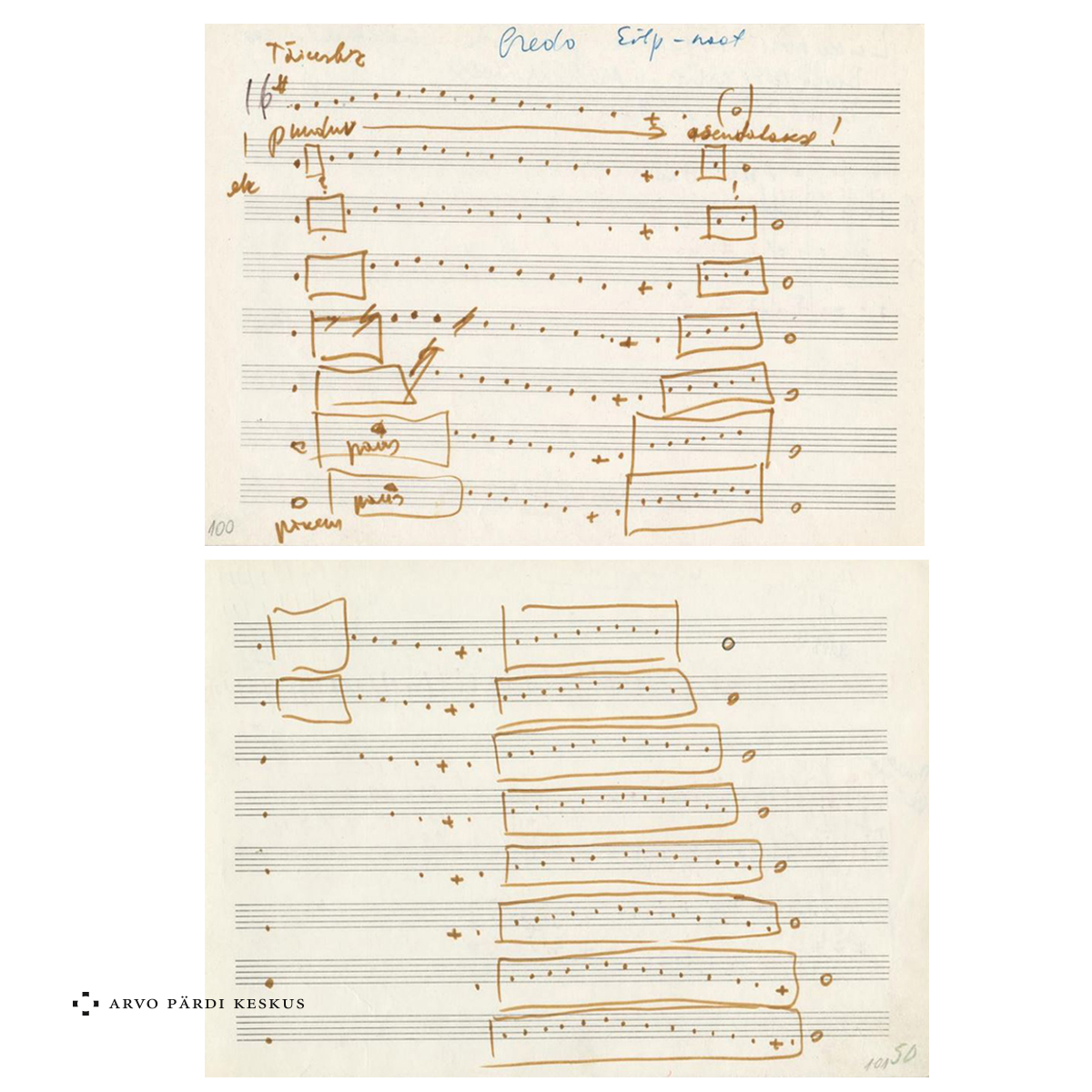
Arvo Pärt’s entry in his musical diary on 11 November 1976. The varying repetition system of Summa
Summa is the first work in which Pärt employed the syllabic method that became crucial to his later works, with one note corresponding to one syllable. Looking at the Summa score, we see that some syllables are distributed across multiple notes. This is because Pärt applied strict polyphony rules to both the melody and the tintinnabuli voice, requiring him to add extra notes in some places to avoid unwanted consecutive intervals.
Having found a system for the melody, Pärt had to calculate how to distribute the 367 syllables of the Credo across the 16 repetitions. With too many syllables for a melody of 16 notes, this was no simple task. Through various divisions, the composer determined that he had to somehow fit 23 syllables into one repetition. Initially, he added seven repeating notes to the existing melody. On the next page of the diary, we see how the idea occurred to Pärt to add a second voice in the opposite direction to the upward-moving melody. This resulted in a four-voice structure: two melodic voices moving in opposite directions accompanied by two tintinnabuli lines.
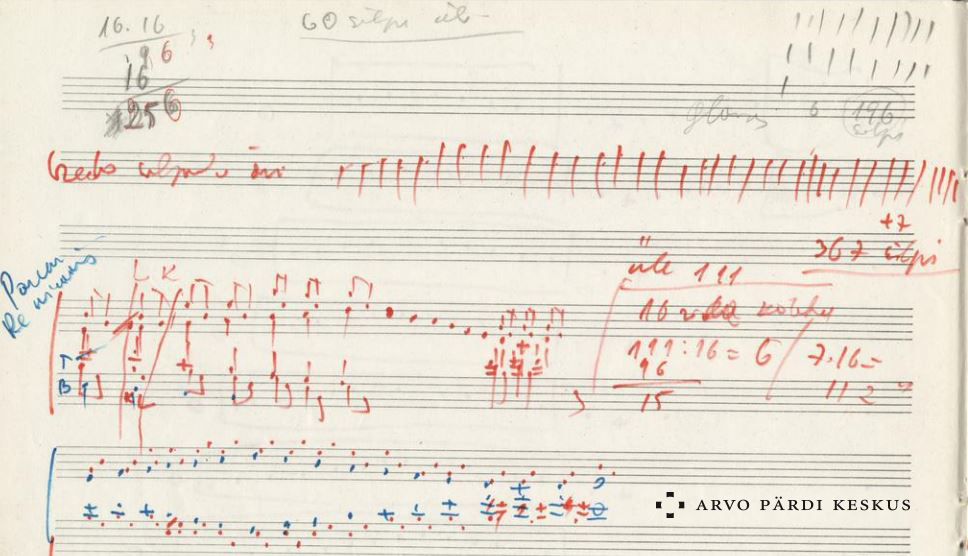
Entry in the musical diary. Calculations on how to distribute the syllables of the Credo across the notes
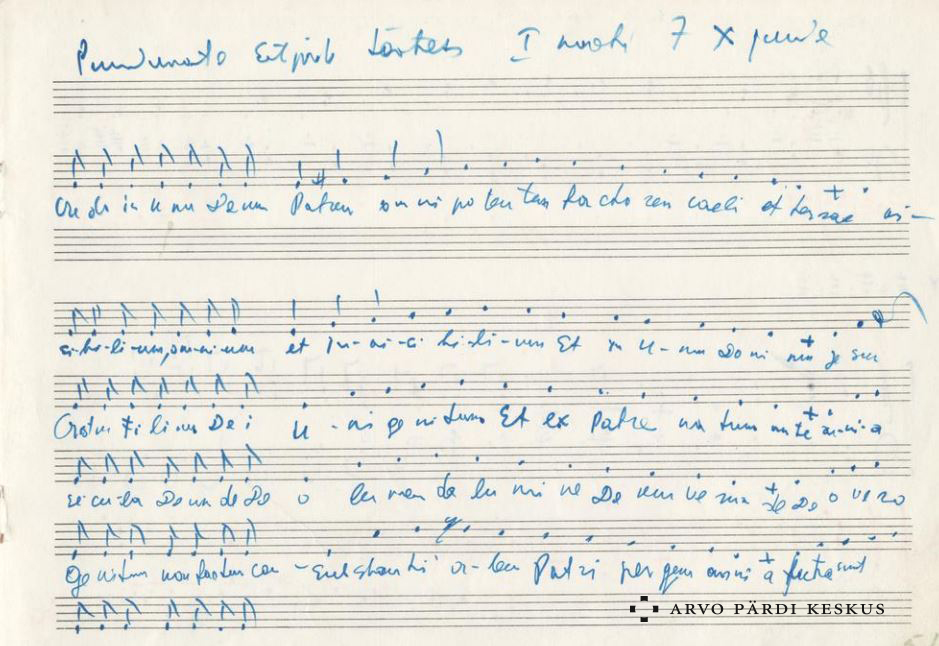
Seven repeating E notes have been added to the 16 melodic notes
On the bottom line of the same page, we see that Pärt arrived at the idea of applying a temporal shift on the two melodic voices. This allowed him to abandon the seven repeating E notes and create an alternation between two- and four-voice textures. Twenty-three syllables are divided between two groups of voices as follows: the first seven syllables are performed in two voices, the next nine syllables in four voices, and the last seven syllables again in two voices. The rule 7 + 9 + 7 applies to all repetitions except the last one. A couple of days later, Pärt wrote the entire text and composition in the diary. He then left it to mature for several months.
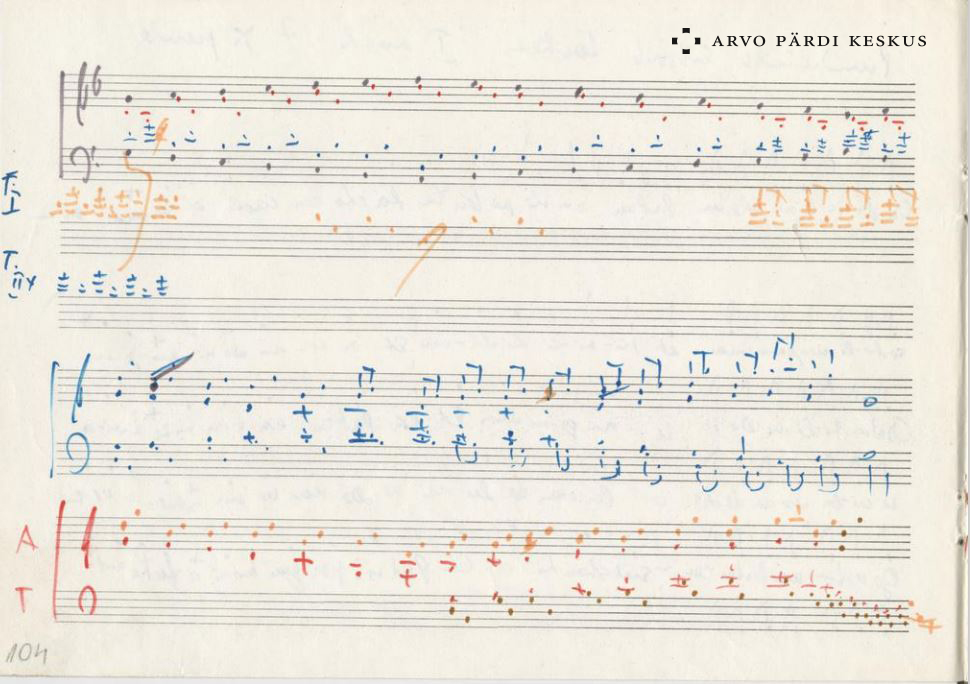
A melody moving in the opposite direction has been added to the upper melody. On the lower melody, Pärt is experimenting with the idea of a temporal shift between the two melodies
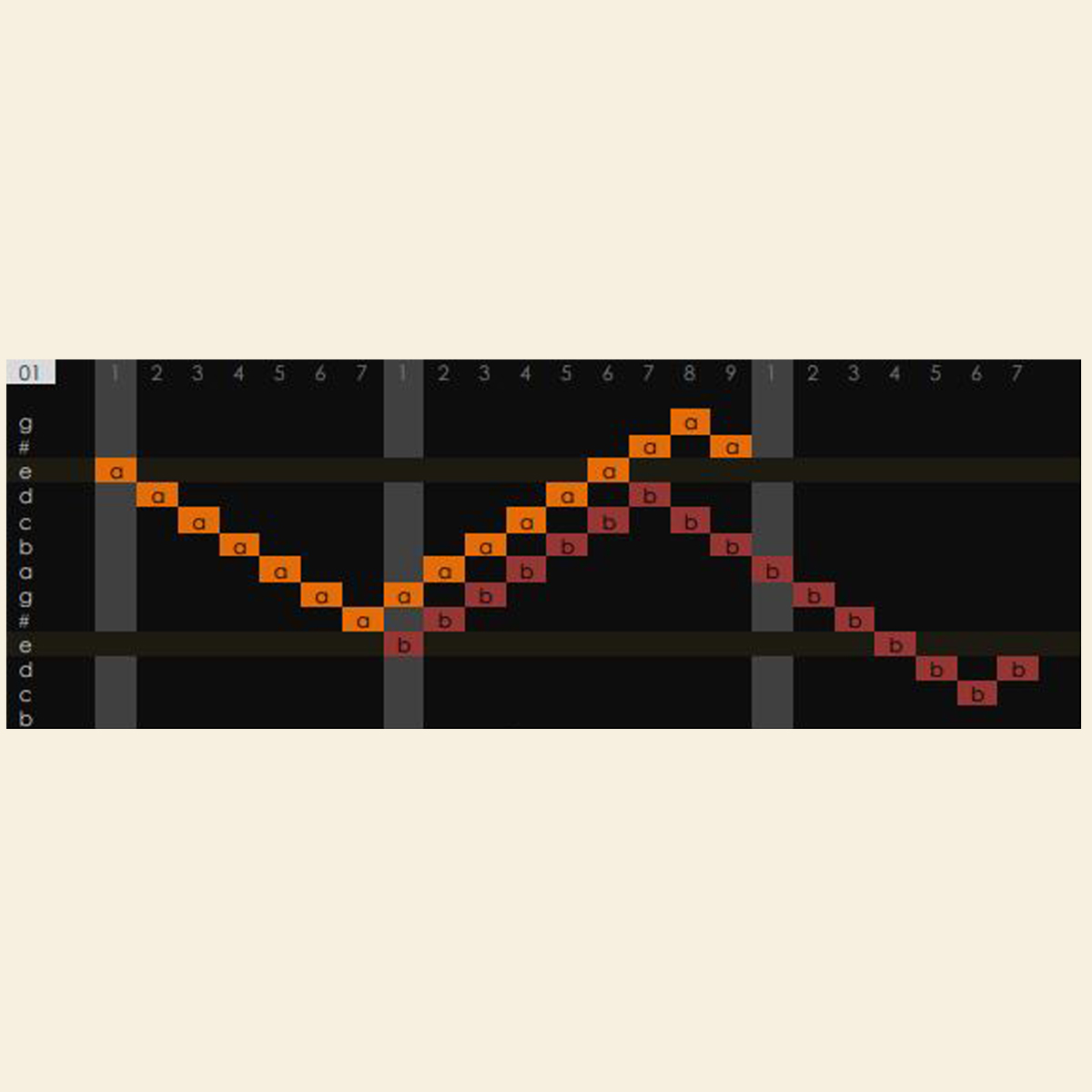
David Patrick’s representation of pitches for two melodic voices. Here, the two triangles hidden in the melody are clearly visible: large and small (1)
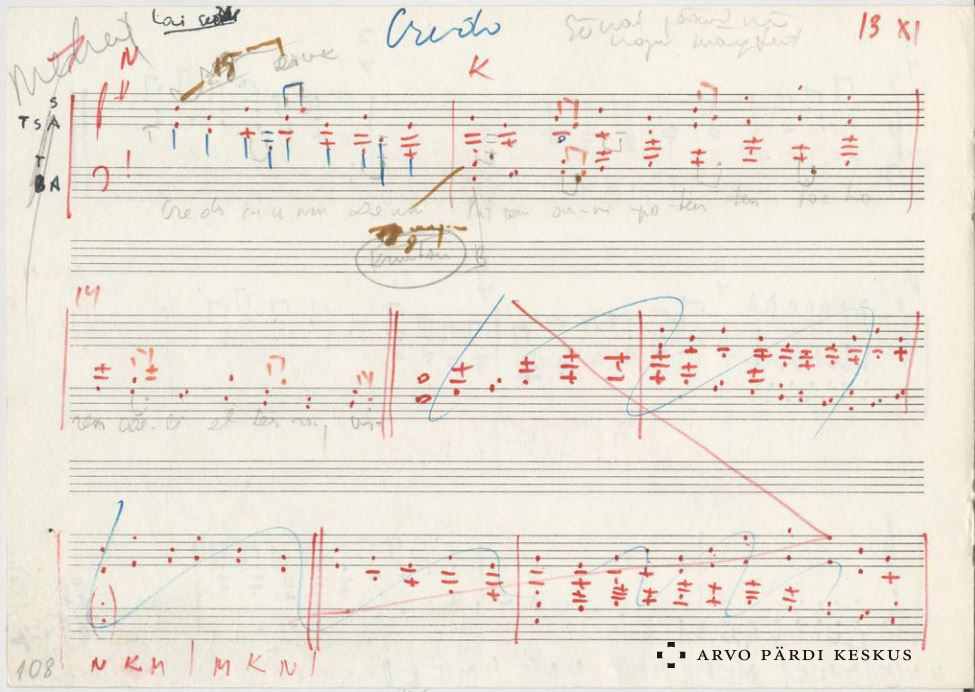
On 13 November 1976, Pärt wrote the entire composition in his musical diary and then set the material aside for a time
Summa reappears in Pärt’s music diary on 14 January 1977. The composition was essentially complete; the last thing that needed to be determined was the alternation of male and female voices. Sopranos and altos start every odd-numbered repetition, while tenors and basses take even repetitions. By November, the composer had already decided on the positions of the tintinnabuli voices in relation to the melody: the soprano tintinnabuli voice is either in the upper second or third position relative to the melody, whereas the tenor tintinnabuli voice is in the upper first or second position relative to the bass melody. Pärt has since explained the changing positions as stemming from his desire to avoid note repetitions that would hinder the flow of the tintinnabuli line.
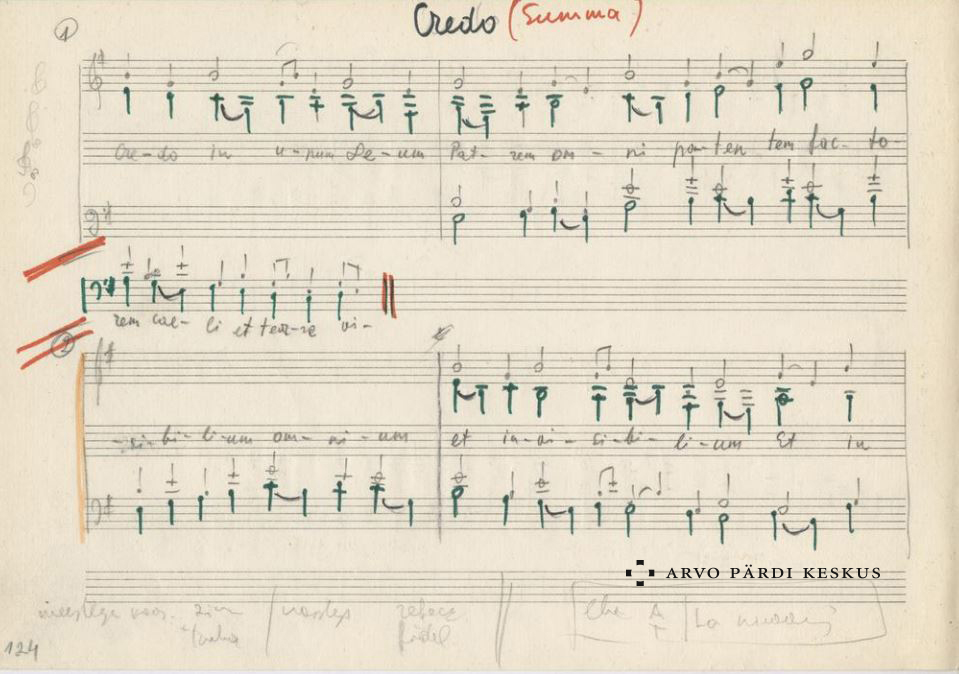
On 22 or 23 January, Pärt wrote the entire music for Summa in his music diary. The composition was complete
The highly formalised musical material of Summa has attracted significant interest from several researchers. One in-depth analysis of the composition was conducted by the musicologist Saale Kareda in her 2012 article “Pärdi teosesse „Summa“ kodeeritud informatsiooni uurides” (Examining the information encoded in Pärt’s Summa). In addition to the rules and systems mentioned in this text, Kareda’s thorough analysis of the material reveals various numerical relationships and symmetries between the notes. In his master’s thesis defended in 2011, David Patrick presents a captivating analysis and visual representation of his findings. He suggests that musical material as meticulously organised as Summa is particularly suitable for analysis via graphic drawings. For this purpose, he presents a number of visual maps that represent the different layers of the composition. During an archival interview, an opportunity arose to introduce Patrick’s pitch maps of the music to Pärt. The composer examined them with great interest and was pleasantly surprised to see such orderly patterns and shapes hidden in his music.
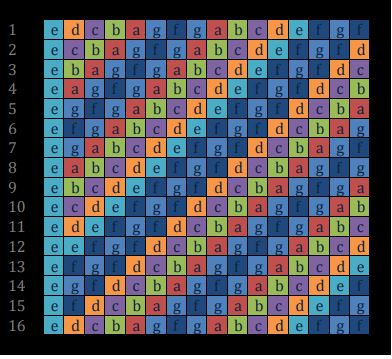
The alto series of Summa and its 15 repetitions as a pitch map made by David Patrick (2)
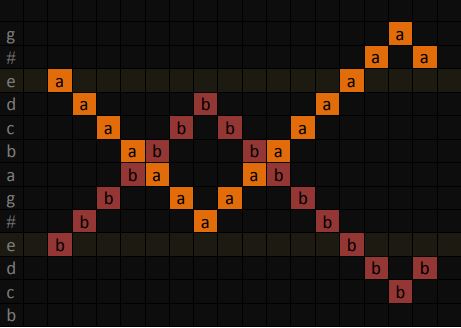
If the two melodic voices sound simultaneously. Pitch map by David Patrick (3)
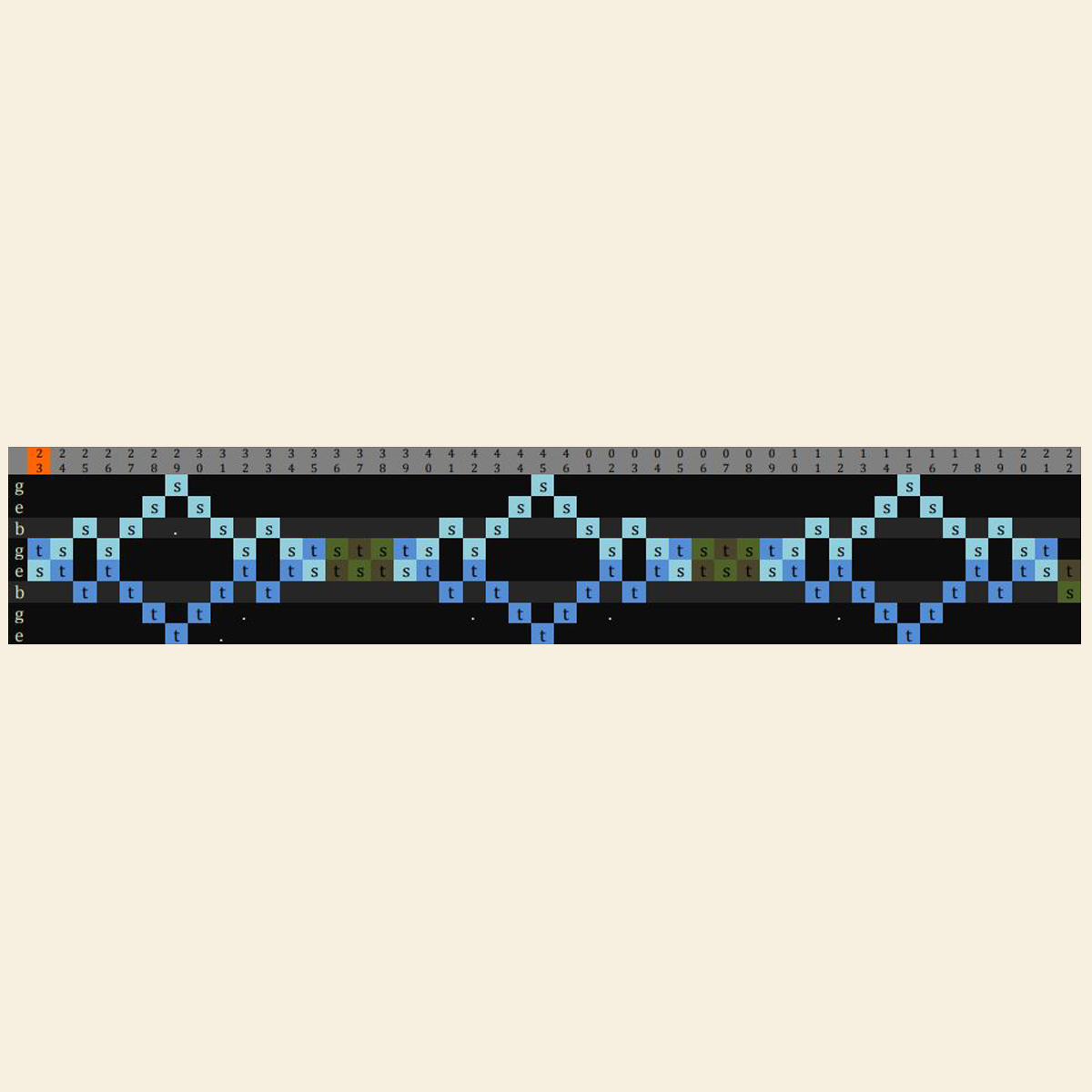
By replacing some deviations (Pärt’s chosen notes are marked as white dots on the pitch map) with other notes and placing two tintinnabuli voices on top of each other, we can observe the profound symmetry hidden in the structure. Pitch map by David Patrick (4)
It is interesting to note that, a couple of years after the creation of Summa, Pärt found it necessary to write down the main rules of the composition. Possibly, he did so because remembering so many systems required him to put them in writing.
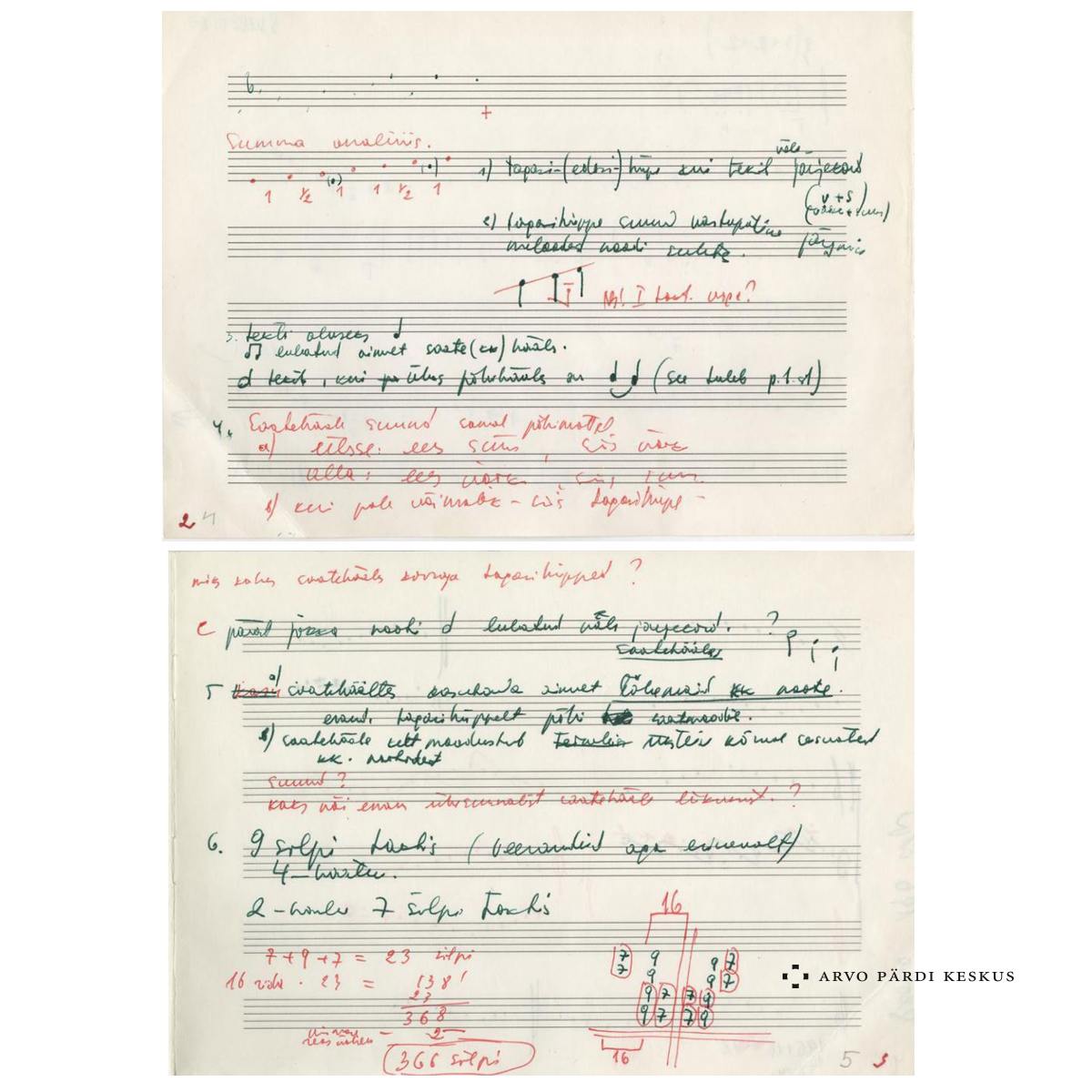
On two pages of his musical diary from February 1980, Pärt analyses his Summa and writes down the main rules of the composition
The association of the words of the Credo with the syllabic method was undoubtedly a crucial leap for the creation of Pärt’s next piece. In less than a month, Pärt completed Missa syllabica, based on the entire text of the Ordinary of the mass, where, for the first time, he applied the parameters of words to creating musical material. This discovery was hugely significant, allowing Pärt to establish an essential connection between his music and texts. Thus, with Summa, the dictate of numerical systems came to an end, and alongside it emerged music that obeyed the Word.
(1) Patrick, David (2011). Analysis of Summa by Arvo Pärt. Master thesis. Faculty of the Humanities, University of Cape Town, p 51
(2) Patrick, David (2011). Analysis of Summa by Arvo Pärt. Master thesis. Faculty of the Humanities, University of Cape Town, p 42
(3) Patrick, David (2011). Analysis of Summa by Arvo Pärt. Master thesis. Faculty of the Humanities, University of Cape Town, p 48
(4) Patrick, David (2011). Analysis of Summa by Arvo Pärt. Master thesis. Faculty of the Humanities, University of Cape Town, p 68
